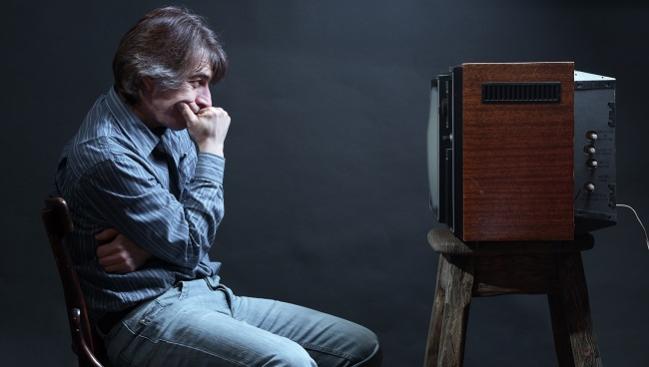FAST Public Health Campaign Fails to Improve Recognition of TIA, Minor Stroke
Seeing as how the TV-based initiative didn’t work, stroke educators are wondering how best to drive home their message.

Television broadcasts aimed at teaching people in the United Kingdom how to recognize stroke symptoms and promptly seek medical attention weren’t entirely successful, new research suggests. Although individuals became more adept at spotting major stroke after the public health campaign, they were no more likely to notice minor stroke and TIA.
Starting in 2009, UK television stations aired national broadcasts that centered around the acronym FAST (Facial dropping, Arm weakness, Speech difficulties, Time to call EMS)—a mnemonic used to help identify symptoms of a stroke. The campaign lasted for 5 years and ultimately cost £10.2 million, or around $13.6 million.
In a paper published online July 2, 2018, in JAMA Neurology, researchers led by Frank J. Wolters, MD (University of Oxford, England), sought to better understand if FAST had changed perceptions of stroke on a wide scale. To do so, they looked at patients diagnosed with stroke or TIA before versus after the campaign, examining whether treatment delays differed.
After the FAST campaign, patients with major stroke became 20% more likely to use emergency medical services and nearly 14% more likely to seek medical attention for their event within 3 hours of symptom onset. However, patients’ abilities to correctly identify and seek medical attention for a minor stroke or TIAs remained unchanged.
These findings are not too surprising, senior author Peter Rothwell, MD, PhD (University of Oxford), told TCTMD. While major strokes tend to display more of the telltale signs highlighted in FAST, minor strokes or TIAs may be harder to identify. “The trouble with TIAs or minor strokes is that they have a whole myriad of different symptoms: from vertigo, to loss of vision in one eye, to speech difficultly, to incoordination in one hand, to tingling down one side,” he said.
If patients are just looking for FAST symptoms, Rothwell added, they could potentially misidentify their condition. “We see quite a few patients in clinical practice who have a minor event and actually say, ‘I looked in the mirror and I didn't have any facial droop, my speech was okay, I could still move my arm, so I thought it can't be stroke,’” he noted. “They are falsely reassured by the fact that they don’t have any of the signs that they have heard about.”
This lack of recognition is risky, Wolters and colleagues say. “When left untreated, approximately 5% of patients with TIA or minor stroke have a major stroke within 24 hours, comprising more than 40% of all recurrent strokes within 30 days. Urgent investigation and medical treatment substantially reduce risk of early recurrent stroke, as could initial self-medication with aspirin alone.”
Oxford Vascular Study
Using data from the Oxford Vascular Study, a population-based study tracking all acute vascular events in a county in South East England, the researchers analyzed the first medical documentation of TIA or stroke between April 1, 2002, and March 31, 2014. In all, 2,243 patients out of over 92,700 individuals experienced an event: 36.8% initially presented with TIA, 37.0% with minor stroke, and 26.2% with major stroke. There was a relatively even balance between men and women, though the population was predominately white (96.3%).
For patients that experienced a minor stroke or TIA but did not seek medical attention and later went on to have another stroke, the previous event was either confirmed through a brain scan or through a structured interview with the patient. All unheeded events within 90 days of the presenting stroke were included in the study.
Two periods were compared: before versus after April 1, 2009, when the FAST campaign began.
For major stroke, there was an uptick after the FAST campaign in the odds that patients would seek medical attention within 3 hours (OR 2.56; 95%CI 1.11-5.90).
However, the likelihood that patients with minor stroke or TIA sought medical treatment within 24 hours did not change before and after the FAST campaign (OR 0.75; 95% CI 0.48-1.19; P for interaction = 0.006 vs major stroke). They were also no more likely to use emergency services (OR 0.79; 95% CI 0.50-1.23; P for interaction = 0.03 vs major stroke). Additionally, the percentage of patients with an unheeded TIA that had a subsequent stroke within 90 days remained the same before and after the FAST campaign (8.0% vs 8.1%, P = 0.93)
Even though a minor stroke or TIA may seem mild to the patient and the symptoms may resolve themselves, medical attention is crucial in preventing future strokes, Rothwell stressed. “People underestimate the size of the treatment benefit from starting standard medical treatment urgently after a TIA,” he said. “It genuinely is an 80% percent reduction in recurrent stroke over the next 7 days.” Of stroke patients with previously unheeded TIAs in this study, 75% of subsequent strokes occurred within a week of the initial event, Rothwell said.
Updating the FAST Message
This study shows that more can be done to educate the public on the signs of stroke, says Mary Ann Bauman, MD, past chair of the American Stroke Association Advisory Committee. While FAST is invaluable at identifying major strokes, she told TCTMD, people need to understand that these common symptoms are not the “be all and end of all of stroke.”
Additionally, patients should take any neurologic symptom, even if it only lasts for a minute to two, seriously, Bauman advised. “I think people have a natural tendency to want to deny something serious is happening with them and this study does show that—that people are easily swayed that something is not important,” she said, adding that more educational efforts are needed in this area.
Beyond adding to the FAST message, there are also ways that physicians and educators could be more selective in public outreach, said Peter Panagos, MD (Washington University in St. Louis, MO), who was not involved in the study.
Perhaps teaching children and teenagers to recognize sign of stroke could help them identify signs of stroke in older family members, who may not notice the signs themselves, he suggested. Also, social media like Facebook and Twitter might surpass television as effective ways to spread simple health information related to stroke. “I think we have to be a little bit more innovative given the results of this study that were not quite achieving what we need to achieve,” he said.
Lucy Hicks is the 2018 recipient of the Jason Kahn Fellowship in Medical Journalism. She is currently a master’s student…
Read Full BioSources
Wolters F, Li L, Gutnikov S, et al. Medical attention seeking after transient ischemic attack and minor stroke before and after the UK Face, Arm, Speech, Time (FAST) public education campaign. JAMA Neurology. 2018;Epub ahead of print.
Disclosures
- Rothwell, Panagos, and Bauman report having no relevant conflicts of interest.


Comments